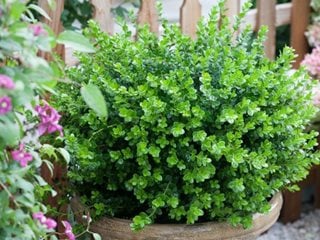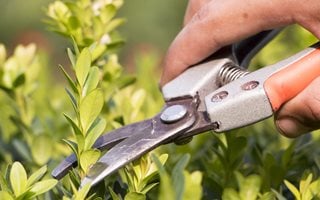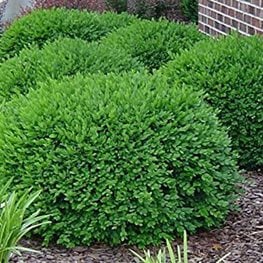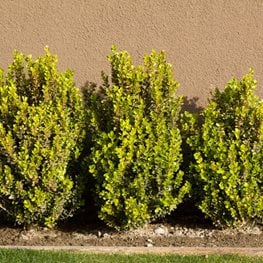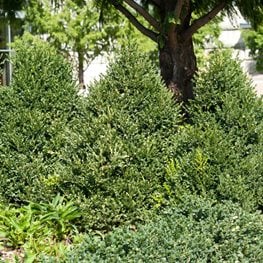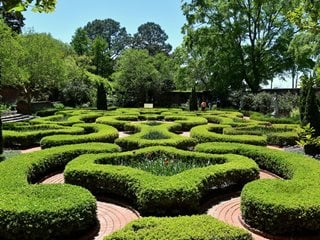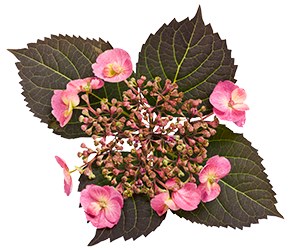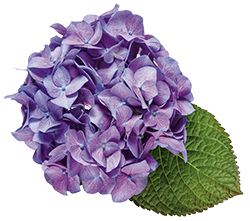How to Grow Beautiful Boxwood Shrubs
Planting and care information for these easy-care evergreen shrubs Updated 8/24/21One of the most versatile shrubs, boxwoods bring year-round color to the garden. Their evergreen foliage brightens dreary winter landscapes, provides structure to both formal and informal gardens, and can be shaped into tightly clipped geometric forms or whimsical shapes.
Natural size, shape, growth rate and hardiness vary between the many types of boxwood shrubs—some are rounded, some low growing and spreading, some upright and some more conical in shape. Their ability to bounce back and withstand regular clipping and shearing makes them perfect for hedge plants and topiaries.
On this page: Basics | Growing Tips | Care and Maintenance | Pictures | Choose the Right Boxwood| Design Ideas | Boxwood Blight
On this page:
- BASICS
- HOW TO PLANT BOXWOOD
- BOXWOOD CARE AND MAINTENANCE
- BOXWOOD VARIETIES
- CHOOSE THE RIGHT BOXWOOD
- DESIGN IDEAS
- BOXWOOD BLIGHT
BASICS
Growing Zones:
5 to 9 for most, with a few varieties hardy to Zone 4.
How big do boxwoods get?
Varieties range from 1 to 20 feet tall, 2 to 8 feet wide.
Do boxwoods like sun or shade?
They prefer partial or dappled shade, but can tolerate full sun — short of scorching mid-day sun. Overexposure to sun causes burning and bronzing of foliage. If planting in a brighter location, look for varieties that may be more tolerant of sun, such as ‘Morris Midget’.
Do boxwoods bloom?
Small, insignificant, yellow-green flowers bloom in spring.
Color and characteristics:
Mainly grown for their foliage; their leaves grow opposite, are lance-shaped to almost rounded, and are leathery to the touch. Many have darker blue-green foliage, others are a paler green color, and some have variegated leaves.
Are boxwoods toxic?
Boxwood bushes contain an alkaloid that is toxic to dogs, cats and horses, as well as humans. Contact with the sap can cause skin irritation. (See more Common Poisonous Plants for Dogs and Cats.)
PLANTING BOXWOOD SHRUBS
When to plant:
Plant in fall or late winter to early spring.
Where to plant:
Different varieties have different needs, mainly with regard to exposure and cold hardiness, so plant them in a location that is appropriate for that particular variety.
One thing they all have in common is that they don’t tolerate standing water or soggy soil, so make sure they are in well-drained soil. Plant in an area that provides protection from winter wind and summer sun which can cause bronzing of the leaves.
How to plant:
The planting hole should allow the crown of the plant to sit slightly higher than soil level. Mound up soil to the base to keep water from pooling. If planted too deeply, they can become stressed and die.
BOXWOOD CARE
When to prune boxwood:
Trimming or shearing encourages new growth and is best done in late spring or summer. Avoid pruning or trimming in fall or winter, because the new growth can be damaged by frost.
How to prune boxwood:
When trimming boxwood, don’t overdo it. While a nice, compact bush may look healthy on the outside, that dense outer foliage (caused from over pruning) can keep air and light from getting to the inner part of the plant. Thin the outer growth annually so that air and light can get in, and prune away any dead or diseased branches from the center of the plant. Shearing can be done with hand pruners, hedge clippers or electric trimmers.
Winter care:
Provide extra protection from cold temperatures and winds with burlap wraps, decorative protection, or a windbreak. Apply a good layer of mulch to keep the roots insulated; this will also conserve moisture to prevent dehydration damage from cold winter winds.
If bronzing of the foliage does occur, resist the temptation to cut it back immediately. The new growth that is prompted from cutting won’t be any hardier than what was damaged, so hold off until spring when new growth can make a comeback.
Soil:
Boxwood bushes are extremely flexible and can adapt to various types of well-drained soils. Ideal soil pH is 6.5 to 7. For more on proper soil preparation and how to adjust your pH if needed, read Garden Soil 101.
Amendments & fertilizer:
Apply a balanced all-purpose fertilizer in spring to promote foliage growth, and again in fall to encourage root growth. Apply the fertilizer throughout the root zone, which extends beyond the crown of the plant. Be careful; their shallow root systems can be damaged by over fertilizing.
Watering:
Water newly planted shrubs regularly for the first year, especially during hot, dry weather. In their second year, root systems are still developing, so continue to water regularly if rainfall isn’t enough. Once established, they’re quite drought tolerant and only need extra watering during dry spells. Water at the base of the plant to keep the foliage dry and conserve moisture with a layer of mulch that extends 12 to 15 inches past the foliage line.
Diseases and pests:
Boxwood leaf miners, scale insects, lesion nematodes, caterpillars and mites can be a problem; treat with organic neem oil or insecticidal spray. They can also be susceptible to powdery mildew, Pythium root rot, canker and leaf spots. Boxwood blight is a serious problem in many states. See below for more information and planting alternatives.
Deer resistance:
A useful part of a deer-resistant garden, as the same alkaloid that makes them toxic also makes them distasteful and can give off a pungent scent, deterring deer.
BOXWOOD SHRUB VARIETIES
HOW TO CHOOSE THE RIGHT BOXWOOD SHRUB
With so many sizes, growth rates and habits it can be tough to decide which one is best. Here are a few recommendations:
For topiaries and globes, groundcover, or rock gardens: Dwarf English boxwoods work well because their dense form and slow growth rate mean less pruning and maintenance. Fast-growers may outgrow their shape quickly and need continual upkeep. (Staff picks: Buxus sempervirens North Star®, B. sempervirens 'Suffruticosa' and B. ‘Green Velvet’)
For hedges and edging: Use moderate to fast-growing varieties and plant at half the distance recommended. (Staff picks: Buxus microphylla Sprinter®, B. microphylla var. japonica ‘Green Beauty’ and B. sinica var. insularis ‘Winter Gem’)
For spirals and cones: Use taller, more vigorous plants that have a naturally conical or columnar shape. (Staff picks: Buxus ‘Green Mountain’ and B. Green Tower)
For colder zones: Korean boxwoods (B. sinicas var. insularis) survive well in lower temperatures, making them the best choice for cold climate gardens.
LANDSCAPE DESIGN TIPS
One of the most versatile plants in any landscape, the opportunities to use them are nearly endless. Here are a few ideas to get you started:
- Create a border along a property line, walkway or garden bed.
- Cover up unsightly foundation lines.
- Define outdoor spaces with low or medium boxwood hedges.
- Excellent choice for year-round container displays.
- Accentuate entrances, driveways or gateways with manicured specimens.
- Add some whimsy to your garden, patio or porch with a fun topiary shape.
- Plant with companions such as spirea, maiden grass, coneflower, liatris, Oso Easy® roses, rhododendrons, azaleas, and peonies.
WHAT ABOUT BOXWOOD BLIGHT?
What is boxwood blight?
Boxwood blight is a fungal disease that affects the leaves and branches of boxwood plants. First reported in the United States in 2011, it has now been detected in 27 states and continues to spread.
What are the signs of boxwood blight?
One of the first signs is light to dark brown circles with darker borders on the leaves. Plants drop their leaves quickly after being infected, so this stage is often missed. Dark brown to black streaks may also appear on stems.
Does boxwood blight kill boxwood shrubs?
The disease doesn’t directly affect the roots, so plants may grow back. However, boxwood blight weakens plants and makes them susceptible to other pests and diseases. It is these secondary infestations and infections that usually kill the plants.
What should I plant instead if blight is a problem in my area?
If you live in an area that is affected, Gem Box® and Strongbox® inkberry hollies can be great boxwood alternatives. Both are native evergreens that grow similarly in size, shape, and texture, and provide better resistance to disease and winter damage.
RELATED:
The Best Deer-Resistant Plants for Your Garden
20 Best Outdoor Foliage Plants
Planting Ideas for Your Garden
15 Best Shrubs for Privacy
Small Evergreen Shrubs
Evergreen Shrubs for All-Season Interest



